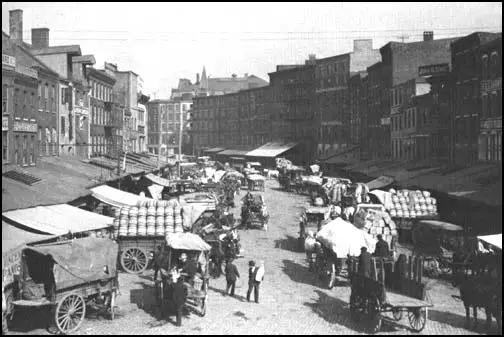Philadelphia
Philadelphia, situated at the confluence of the Delaware and Schuylkill rivers, was settled in 1681 by William Markham, who was leading a group of colonists sent by William Penn. Philadelphia grew rapidly and within four years had a population of 7,000.
In the 18th century two Continental Congresses were held in Philadelphia (1774-76) and in 1790 became the second capital of the United States. Over the next two hundred years Philadelphia became one of the most industrial areas in the world producing ships, rolling stock, electronic equipment and textiles. Philadelphia has a population of over 2,000,000 and is the largest city in Pennsylvania.

Primary Sources
(1) Lincoln Steffens, McClure's Magazine (January, 1903)
Whenever anything extraordinary is done in American municipal politics, whether for good or for evil, you can trace it almost invariably to one man. The people do not do it. Neither do the "gangs", "combines", or political parties. These are but instruments by which bosses (not leaders; we Americans are not led, but driven) rule the people, and commonly sell them out. But there are at least two forms of the autocracy which has supplanted the democracy here as it has everywhere it has been tried. One is that of the organized majority by which, as in Tammamy Hall in New York and the Republican machine in Philadelphia, the boss has normal control of more than half the voters. The other is that of the adroitly managed minority. The "good people" are herded into parties and stupefied with convictions and a name, Republican or Democrat; while the "bad people" are so organized or interested by the boss that he can wield their votes to enforce terms with party managers and decide elections. St. Louis is a conspicuous example of this form. Minneapolis is another.
